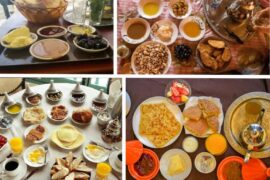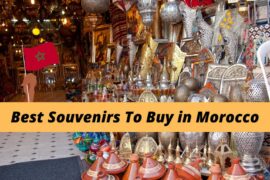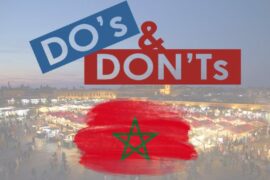Must-Have Moroccan Hammam Elements:
The Moroccan Black Soap:
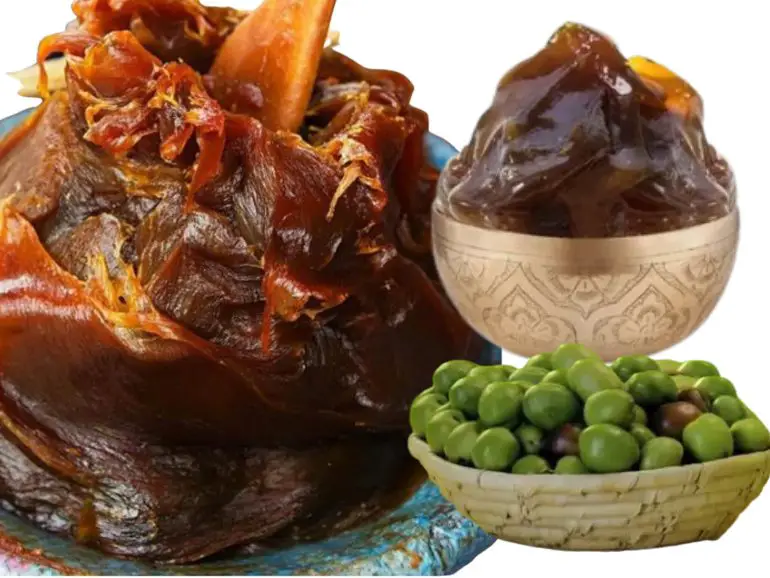
The Black soap is made of olives and Moroccans use it widely for skin exfoliation purposes either in public hammams, Spas, or at home.
As olives are high in nutrients, the Moroccan Black soap is considered a natural exfoliator.
Exfoliating Glove:
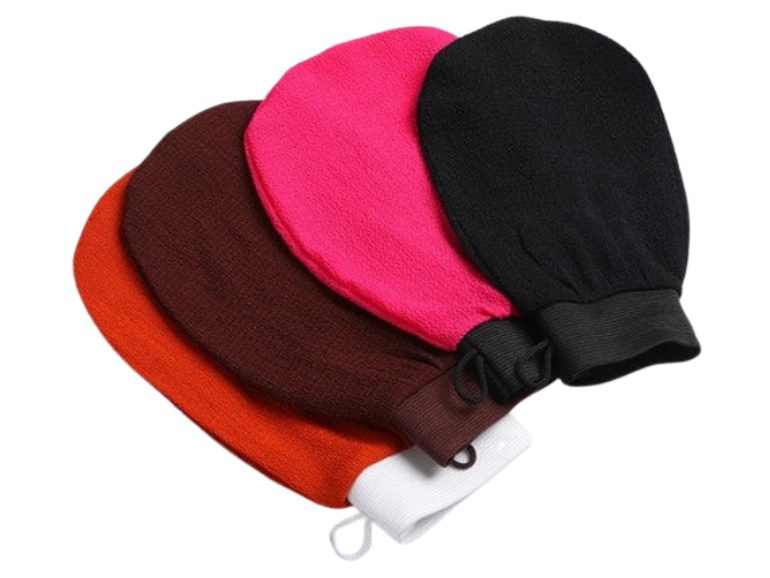
The traditional Moroccan exfoliating Glove, called Lkiss ” is an important element in the Moroccan Hammam rituals. Traditionally, it’s used with Black Soap for deep skin purification by removing dead skin cells and toxins elimination. The exfoliating Glove helps to make skin soft and rejuvenated.
Moroccan Clay:
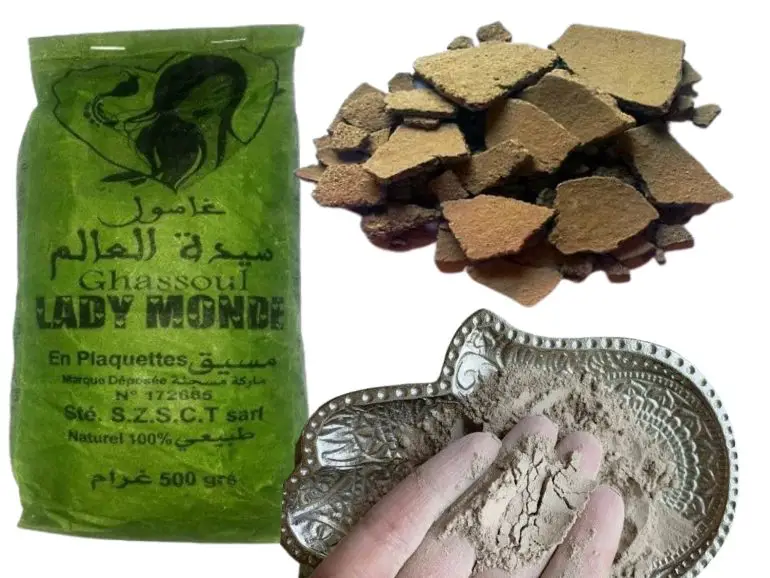
The Moroccan clay, called Ghassoul by Moroccans, is extracted from muddy mountainous areas in the Atlas Mountains and also from the outskirts of Fez city. The natural ingredients of the Ghassoul contains minerals and vitamins that nourish skin and hair.
Ghassoul clay, for many generations, is very used by Moroccan women to keep their beauty and an important element for the Moroccan traditional bath along with henna, black soap, and argan oil.
Moroccan Hammam Rituals
-
Apply oil or Moroccan clay to your hair
One or couple hours before having a shower, you apply an oil or Moroccan clay on your hair.
Regarding the oil, it may be argan oil, olive oil or many others depending on your hair needs or problems.
-
Run a hot water bath or shower
The second most important point of the Moroccan hammam is to have very hot water and create steam in the bathroom.
-
Apply the black soap to your damp skin
Pour water on your body to make it damp and then apply the black soap (Savon Beldi) all over your body in a thin layer and leave it on your body for at least 10 minutes.
-
Exfoliate your skin with a glove
Your skin now is ready to be exfoliated by the glove. After you finish exfoliating your whole body, you clean it with hot water.
- Clean your hair
- Clean your body with a shower gel


